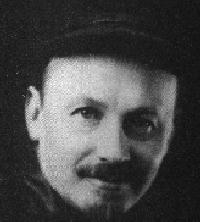Still working to recover. Please don't edit quite yet.
Great Purge
The Great Purge was a continuation and escalation, during 1937-38, of the elimination of "undesirables" from the Communist Party.[1].
While the early purges (Russian: "чиÑтка", chistka – "cleansing") , and one as late as 1929-30 by Joseph Stalin, meant no more than the loss of party privileges and status, during the Great Purge, being expelled from the Party came to mean possible arrest, imprisonment or even execution.
Members of working classes were normally accepted without question into the Party. Another criteria, harder to prove, was contributions to the revolutionary cause. By the same token, betrayal or lack of commitment to the Party was hard to prove, but instead of reducing the number purged, the burden of proof was lowered.
The political purge was primarily an effort by Stalin to eliminate challenge from past and potential opposition groups, including left and right wings led by Leon Trotsky (WP) and Wikipedia:Nikolai Bukharin, respectively. Following the Russian Civil War (WP) and reconstruction of the Soviet economy in the late 1920s, the "temporary" wartime dictatorship which had passed from Lenin to Stalin seemed no longer necessary to veteran Communists. Stalin's opponents on both sides of the political spectrum chided him as undemocratic and lax on bureaucratic corruption. These tendencies may have accumulated substantial support among the working class by attacking the privileges and luxuries the state offered to its high-paid elite.
The Ryutin Affair, roughly speaking, an attempt by Ryutin to lead a coup against Stalin, seemed to vindicate Stalin's suspicions. He therefore enforced a ban on party factions and banned those party members who had opposed him, effectively ending democratic centralism. In the new form of Party organization, the Politburo, and Stalin in particular, were the sole dispensers of communist ideology. This necessitated the elimination of all Marxists with different views, especially those among the prestigious "old guard" of revolutionaries.
Communist heroes like Wikipedia:Mikhail Tukhachevsky and Wikipedia:Béla Kun, as well as the majority of Wikipedia:Lenin's Wikipedia:Politburo, were shot for disagreements in policy. The Wikipedia:NKVD were equally merciless towards the supporters, friends, and family of these heretical Marxists, whether they lived in Russia or not. The most infamous case is that of Leon Trotsky, whose family was almost annihilated, before he himself was killed in Mexico by NKVD agent Wikipedia:Ramón Mercader, who was part of an assassination task force put together by Special Agent Wikipedia:Pavel Sudoplatov, under the personal orders of Joseph Stalin.[2]

Wikipedia:Sergey Kirov's murder in 1934 was used by Stalin as a pretext to launch the Great Purge, in which about a million people perished. Some later historians came to believe that Stalin himself arranged the murder, or at least that there was sufficient evidence to reach such a conclusion.[3] Kirov himself was a staunch Stalin loyalist, but Stalin may have viewed him as a potential rival because of his emerging popularity among the moderates. In the 1934 party congress, Kirov was elected to the central committee with only three negative votes, the fewest of any candidate, while Stalin received 292 negative votes. After Kirov's assassination the Wikipedia:NKVD charged the ever growing group of former oppositionists with Kirov's murder and a growing list of other offences, including treason, terrorism, sabotage, and espionage.
Another justification was to remove any possible "Wikipedia:fifth column" in case of a war. This was a justification maintained to the very end by Wikipedia:Vyacheslav Molotov and Wikipedia:Lazar Kaganovich, participants in the repression as members of the Politburo, who both signed many death lists.[4] Stalin was convinced of the imminence of war with an explicitly hostile Nazi Germany and an expansionist Japan. This was reflected in the Soviet press, which also portrayed the country as threatened from within by Fascist spies.[5]
As with elsewhere in the world, even to this day, Russian Army officers had tended to be groomed and promoted primarily from the ruling class. When Hitler betrayed the Ribbentrop Pact and attacked the USSR midway through World War II, the purge had killed a number of officers sufficient to cause a shortage of both officers and officer uniforms. The USSR stepped up its officer training programs, and the Soviet army hurriedly made do with officer rank insignia stitched onto regular uniforms.
From Stalin's death in 1953 until 1991, purges as systematic campaigns of expulsion from the Party stopped and loss of the Party membership once again meant only loss of possible Wikipedia:nomenklatura privileges.
See also
| This article contains content from Wikipedia. Current versions of the GNU FDL article Great Purge on WP may contain information useful to the improvement of this article | WP |
- Leon Trotsky Stalin's archrival, assassinated by a Stalinist operative, overseas, in Mexico in August 1940, after a failed attempt in May 1940. Assassination abroad was not a normal means of the Great Purge
- Wikipedia:Purges of the Communist Party of the Soviet Union Removal of "undesirables" from the Communist Party
References
- Andrew, Christopher; Mitrokhin, Vasili (2000) [1999]. The Sword and the Shield: The Mitrokhin Archive and the Secret History of the KGB. New York, NY: Basic Books. ISBN 978-0-465-00312-9
- Conquest, Robert (1987). Stalin and the Kirov Murder. New York, NY: Oxford University Press. ISBN 0-19-505579-9
- Figes, Orlando (2007). The Whisperers: Private Life in Stalin's Russia. London: Allen Lane. ISBN 978-0-7139-9702-6
Citations
- Pages with broken file links
- 1930s in the Soviet Union
- 1930s conflicts
- 1936 in the Soviet Union
- 1937 in the Soviet Union
- 1938 in the Soviet Union
- Great Purge
- History of the Soviet Union and Soviet Russia
- History of Russia
- History of the Soviet Union
- Joseph Stalin
- Mass killings
- NKVD
- Politicide
- Political and cultural purges
- Political repression in the Soviet Union
- Politics of the Soviet Union
- Stalinism